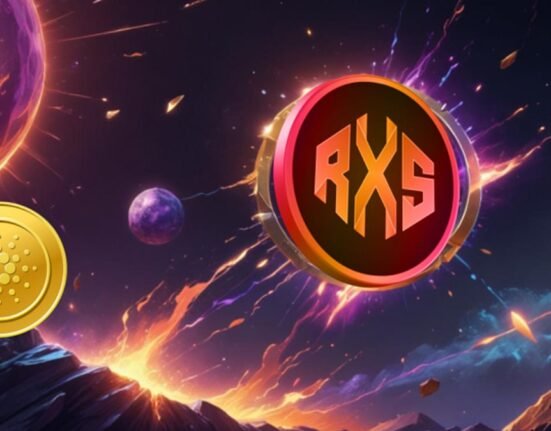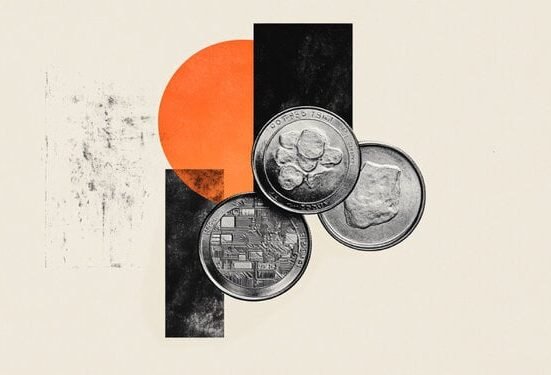Efficiency gains, transparency, and capital formation are the main advantages of tokenizing real-world assets on the blockchain. Web3 accelerator Outlier Ventures has identified asset tokenization as a growth sector starting in 2024, saying the industry could become blockchain’s “killer app,” reaching between US$10-15 trillion within a decade.
Speaking to Yahoo Finance Future Focus, Outlier Ventures Analyst Jasper De Maere said financial markets represented one of blockchain’s big hopes, thanks to gains in execution efficiency and the ability to raise capital through “fractionalizing” ownership of large tangible assets into more affordable shares.
Dr. Craig S. Wright has long touted real-world asset tokenization on the (BSV) blockchain as superior to the world of speculative digital asset trading. The latter is akin to casino gambling, with traders placing bets on the volatile prices of intangible blockchain network tokens. These market values usually have little to do with the actual utility or viability of their networks and represent no real value to the economy. On the other hand, tangible assets like real estate and corporate/government bonds have uses and value reflected in the physical world.
Blockchain adoption in mainstream finance has, however, been slow. As Yahoo Finance’s interview showed, most remain unaware of even the basics, and host Brian McGleenon asked De Maere to explain fundamentals like “What is meant by the words ‘tokenization’ and ‘trustless’?”
“Trustlessness is the idea that there’s no central entity which oversees the governance of the database. So there’s no trust that needs to be put into the central entity in order to make sure the data is accurate, timely-managed, and all that stuff,” De Maere replied.
Some Asian governments and banks have taken tentative steps towards bond tokenization, including the Philippines, Singapore, and Hong Kong. So far, these efforts have been proofs-of-concept only.
Fractionalizing larger real-world assets
De Maere said the greatest benefit to tokenizing real estate is fractionalization—allowing a tangible asset that would usually have one or a small handful of owners to be split into much smaller units. Tiny percentages of a single property could be bought, sold, and traded on exchanges to investors who might not otherwise be involved in the real estate market. This, he added, helps capital formation.
So far, he said, large financial industry players have implemented blockchain only as part of pilot programs. He mentioned Franklin Templeton (debts, Treasuries), WisdomTree, and Brevan Howard (tokenizing funds) as companies that have explored the technology. His own company has accelerated DeFi-related projects like Boson Protocol and OraBase.
Which blockchain, though?
Of note, it’s rare for mainstream media reports to ask which blockchain, in particular, these DeFi/tokenization platforms are running on. That could be a positive or negative sign: on the one hand, it means “Which blockchain?” isn’t of much interest to investors (becoming “plumbing”); on the other, it could signal that Ethereum/ERC20 tokens are the de facto standard for asset tokenization, and doesn’t need to be mentioned by name each time.
However, Ethereum still has plenty of issues that years of upgrades and radical protocol changes have so far been unable to overcome. At times of high traffic volumes, the network still struggles with congestion and high “gas fees” (similar to transaction fees) that reduce its efficiency. There’s a disadvantage in referring to Ethereum generically as “blockchain” if it gives investors a negative impression of the technology in general and deters future use.
Ethereum gained its valuable first-mover advantage as the first blockchain network to promote smart contracts and develop a working tokenization standard (ERC20). However, Bitcoin, in its original form, also had the mechanisms to support contracts and greater data throughput—had Bitcoin been allowed to develop unfettered by artificially placed limitations (which still exist today on BTC), it could have retained most of the developer talent that subsequently left the ecosystem out of frustration.
Similar frustrations arising from Ethereum’s own limitations and protocol have seen several projects move to the BSV blockchain and the BSV20 token protocol, with its ability to scale unboundedly at a fraction of the costs. Given that blockchain is still a relatively obscure niche in the financial world, there’s still plenty of potential for traffic and talent to migrate to the most useful networks before hitting the big time.
Watch: The future of digital assets and a tokenized world
width=”560″ height=”315″ frameborder=”0″ allowfullscreen=”allowfullscreen”>
New to blockchain? Check out CoinGeek’s Blockchain for Beginners section, the ultimate resource guide to learn more about blockchain technology.







